Australia must be up for conventional war
A new Defence white paper update says more assertive behaviour by major powers present immediate challenges to Australia.
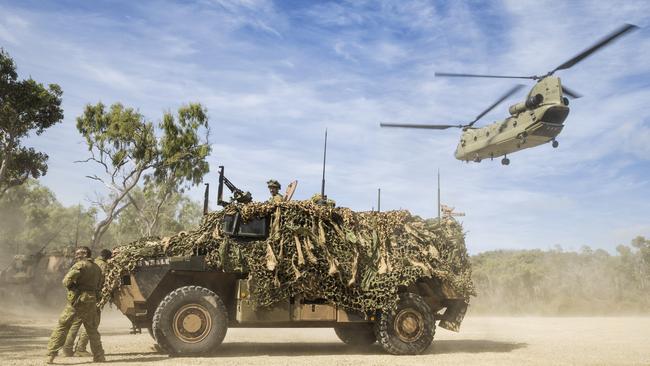
Australia must be ready to fight a conventional war at short notice as growing threats eliminate past assumptions of a 10-year “strategic warning time” before a major attack, the Morrison government says.
A new Defence white paper update says more assertive behaviour by major powers, including Beijing’s militarisation of the South China Sea and coercive “grey zone” activities, present immediate challenges to Australia.
Strained supply chains, the economic impacts of the pandemic, water and food insecurity and state fragility also pose growing threats, the paper says.
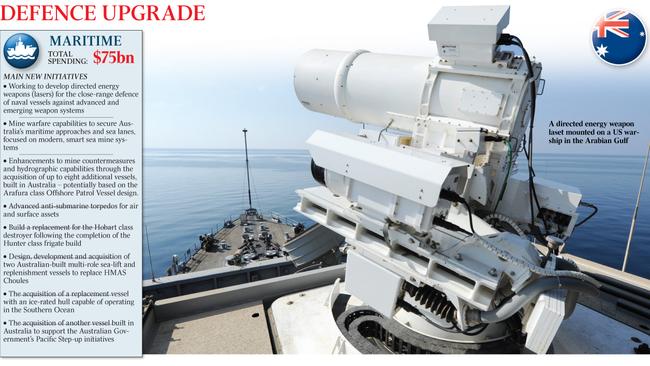
The new assessment comes amid a warning from Defence Minister Linda Reynolds that China’s push for greater influence in the Indo-Pacific has “deeply unsettled the region”.
Senator Reynolds will declare in a speech on Thursday that China’s actions in the region have inflamed strategic tensions.
“We have supported China where that pursuit advances mutual interests in security, prosperity and stability,” she will say.
“However, some of China’s actions have deeply unsettled the region. They have not positively contributed to Australia’s, or the region’s, security and stability.
“Australia is far from alone in being troubled by this.”
She will warn that the maintenance of Australia’s values is “non-negotiable”.
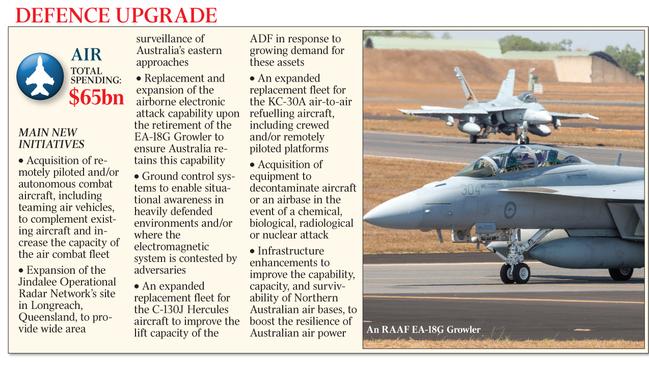
“We have been very clear in expressing our concerns about developments that are inconsistent with international law or may undermine the sovereignty of nations,” Senator Reynolds will say. “We do so from a steadfast position — that our values are what define us as a nation.”
The move to call out China will invite diplomatic retaliation from Beijing.
But the Morrison government is hardening its stance against Chinese complaints about Australia’s foreign policy.
The acquisition of new long-range strike missiles, including air and land-based systems, will infuriate the Chinese government.
The defence strategy update, released on Wednesday, injects fresh urgency into Australia‘s military planning, warning that an assumed 10-year warning of an attack “is no longer an appropriate basis for defence planning”.
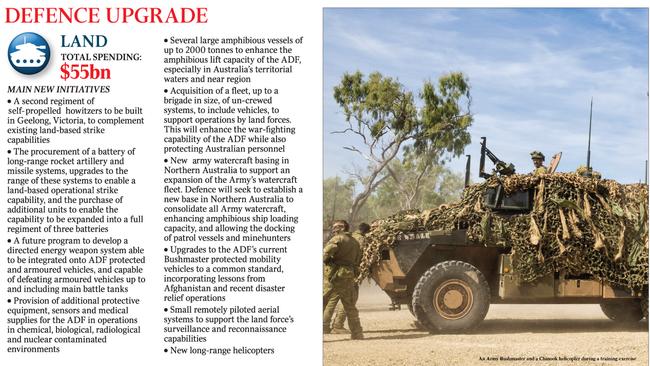
It says strategic warning time has been reduced by “new capabilities, including longer-range missiles, ballistic missiles and offensive cyber and space capabilities”.
Unveiling the new force structure plan on Wednesday, Scott Morrison said he was troubled by the region’s worsening strategic circumstances, which he likened to Europe in the late 1930s and early 40s.
“That period of the 1930s has been something I have been revisiting on a very regular basis, and when you connect both the economic challenges and the global uncertainty, it can be very haunting,” the Prime Minister said.
However, he said the situation was “not overwhelming” and Australia stood ready to respond.
The defence strategic update warns that the prospect of high intensity military conflict in the Indo-Pacific “is less remote than in the past”, requiring a new strategic posture of “deterrence”.
New long-range strike missiles will fill the strategic gap, which has been exacerbated by the long delivery timeframes of new frigates and submarines that won’t enter service until the late 2020s and early 2030s.
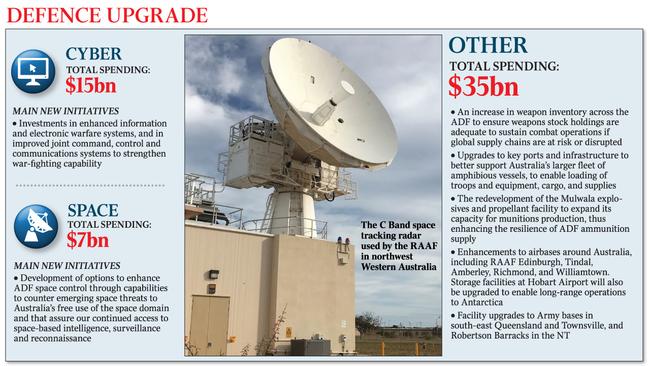
“The nature of current and future threats, including coercion in the region, more capable and active regional military forces, and expanding anti-access and area denial capabilities, requires Defence to develop a different set of capabilities,” the strategy says.
“These must be able to hold potential adversaries’ forces and infrastructure at risk from a greater distance, and therefore influence their calculus of costs involved in threatening Australian interests.”
Senator Reynolds will tell the Australian Strategic Policy Institute on Thursday that the nation can no longer rely on a decade-long warning time of an attack against Australia. “This is no longer valid. Defence thinking, strategy and planning have accordingly shifted gears.
“Right across the Indo-Pacific, countries are modernising their militaries and increasing their preparedness for conflict.”
The new 10-year strategy pledges $270bn over 10 years to acquire new defence capabilities. It’s unclear whether the promised funding will pay for new land-based long-range missiles.




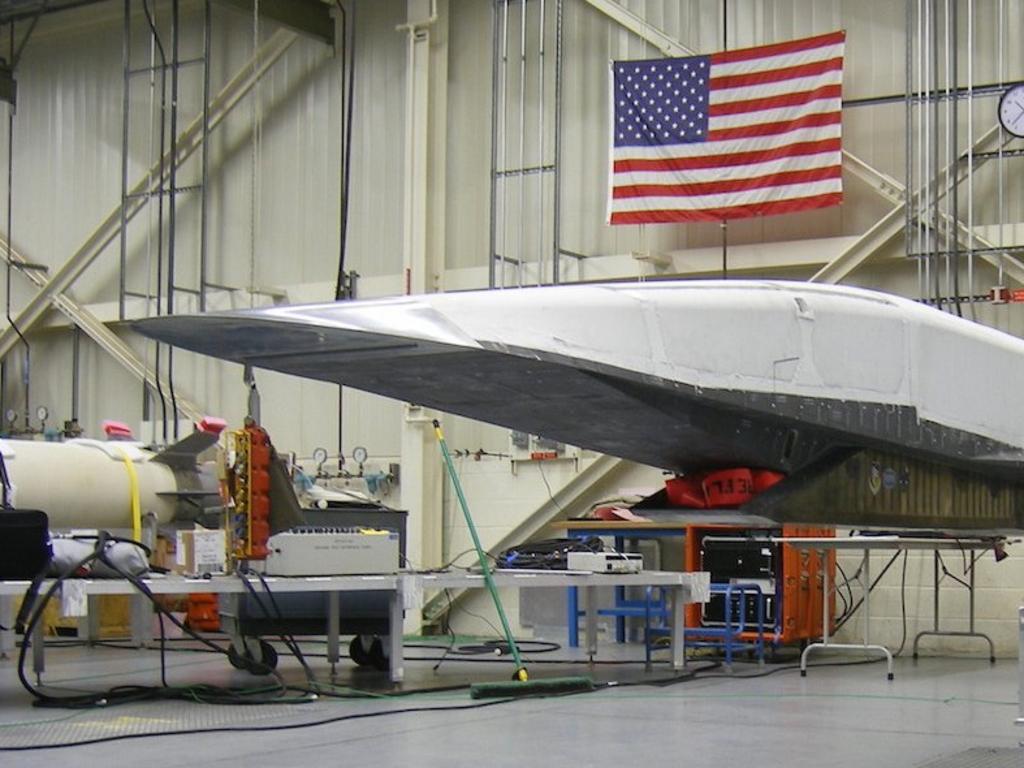



To join the conversation, please log in. Don't have an account? Register
Join the conversation, you are commenting as Logout